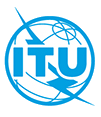Internet of Things (IoT) and Digital Twin - Best practices for use case projects
This document describes best practices for use case projects in terms of characterization, template, plan and maintenance. It is intended to developers of use case projects, including in the context of standardisation. The document can be used to complement existing methodology standards such as IEC 62559 or IEC Guide 125.

ISO/IEC TR 30194 ED1
https://www.iec.ch/ords/f?p=103:38:9406018951756::::FSP_ORG_ID,FSP_APEX_PAGE,FSP_PROJECT_ID:20486,20,104897
